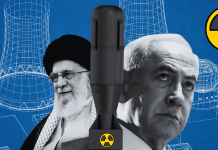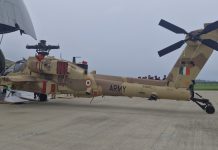The Russian S-70 Okhotnik heavy drone that was shot down on October 5, 2024, was allegedly involved in missions to strike ground targets. The incident occurred near Kostiantynivka, located in the Kramatorsk district, approximately 15 to 20 kilometers from the front line.
At the crash site, remnants of a corrected UMPB D-30SN glide bomb were discovered, shedding light on the drone’s intended operational role. The UMPB D-30 is a Russian aerial munition developed from the FAB-250 bomb and equipped with a satellite guidance system.
Reports indicate that its maximum range can vary between 50 and 90 kilometers. The presence of the UMPB D-30 at the crash site suggests that Russian forces intended to utilize the Okhotnik as a standoff bomber, deploying precision-guided glide bombs to engage enemy positions.
The stealthy drone likely lost control before being shot down by a Russian fighter jet, which acted to prevent it from reaching Ukrainian Defense Forces. Following the incident, videos began circulating online, showing a Russian Aerospace Forces (RuAF) fighter jet shooting down the S-70 Okhotnik.
The clips depict two aircraft in flight, with contrails visible in the sky and a streak of smoke indicating the fighter jet fired an air-to-air missile at the drone.
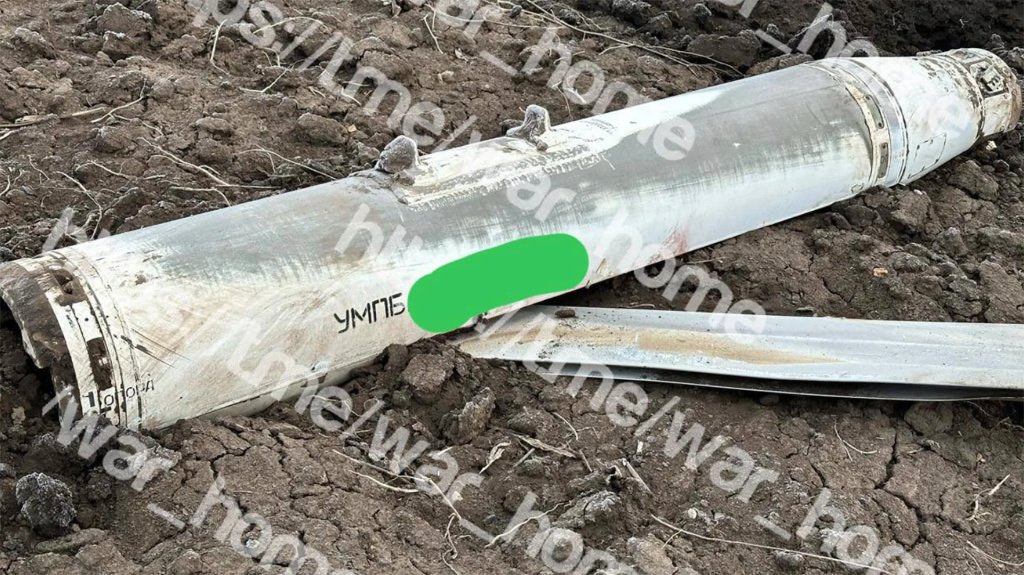
Telegram channel Fighterbomber, which is believed to be affiliated with the Russian Air Force, interpreted this incident as evidence of the increased deployment of S-70 drones over Ukraine. The channel claimed, “Russia has begun to massively use heavy strike UAVs Inokhodets and Okhotnik in the special operations area.”
The Inokhodets, a non-stealthy, propeller-driven combat drone, has reportedly been active in the conflict, with Ukrainian forces claiming to have shot down at least seven of them. However, it remains unclear whether the Okhotniks are making a significant contribution to Russia’s military efforts.
Sukhoi, the manufacturer of the Okhotnik, first flew the satellite-guided drone in 2019 and conducted its first bomb drop two years later. Only two prototype Okhotniks were built initially. Fighterbomber claims that the downed drone was a production model rather than a prototype, but this assertion is difficult to verify.
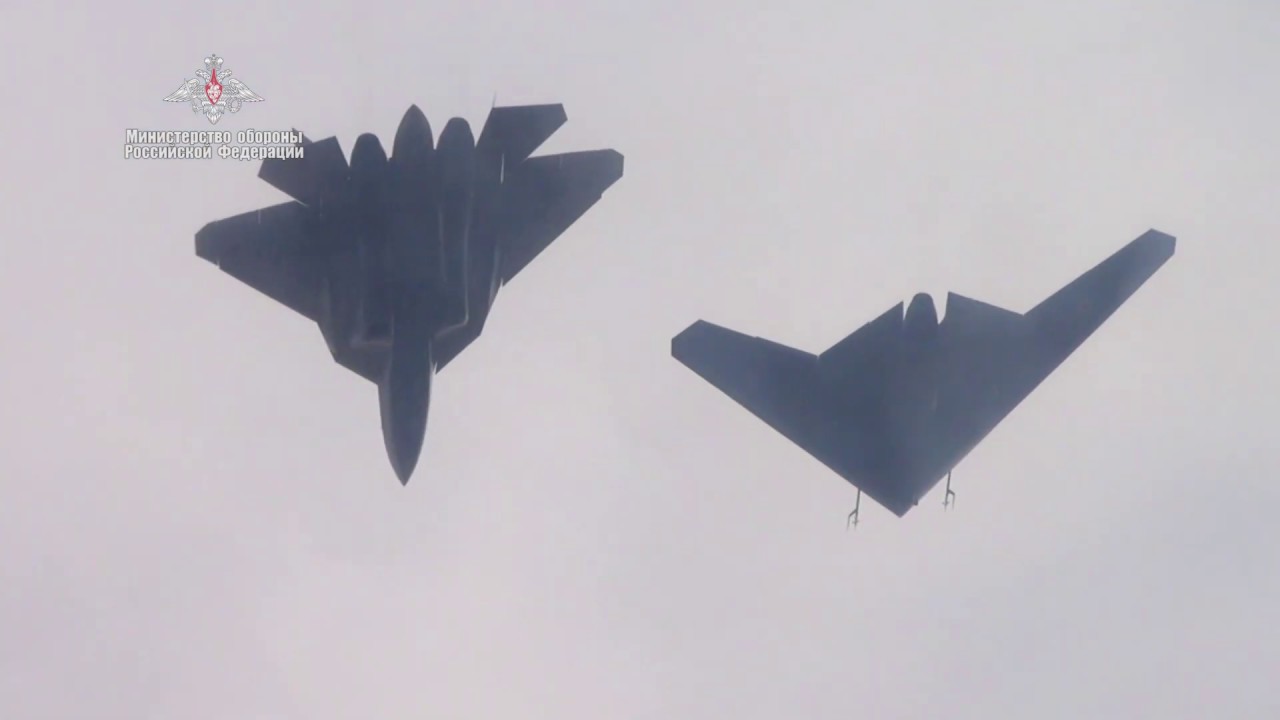
Strategic Advantages Of UMPB D-30 Bomb
The UMPB D-30’s choice over the more frequently utilized UMPK can be attributed to the S-70 Okhotnik’s design, which features stealth technologies that necessitate internal weapon bays rather than external suspension points on the wings.
The Okhotnik’s design is based on the flying-wing scheme and uses composite materials and stealth coatings, reducing its RCS (radar cross-section). After analyzing the wreckage, a Ukrainian analyst reportedly said that the downed drone did not have any stealth polymers.
The UMPK, designed from a larger FAB bomb, simply cannot be accommodated within the internal compartments of the drone.
In addition, the UMPB D-30 provides an extended operational range. Unlike the UMPK, which functions as a free-fall bomb equipped with wings and guidance systems, the UMPB D-30 was specifically engineered as a glide bomb.
This design endows it with a remarkable range of up to 90 kilometers, enabling the S-70 to conduct strikes from safer distances away from enemy defenses.
Moscow likely perceives this drone-bomb combination as a highly effective strategy for aerial strikes against Ukrainian targets. Utilizing such missions allows for the deployment of an uncrewed drone, albeit a costly one, thereby minimizing the risk to human life.
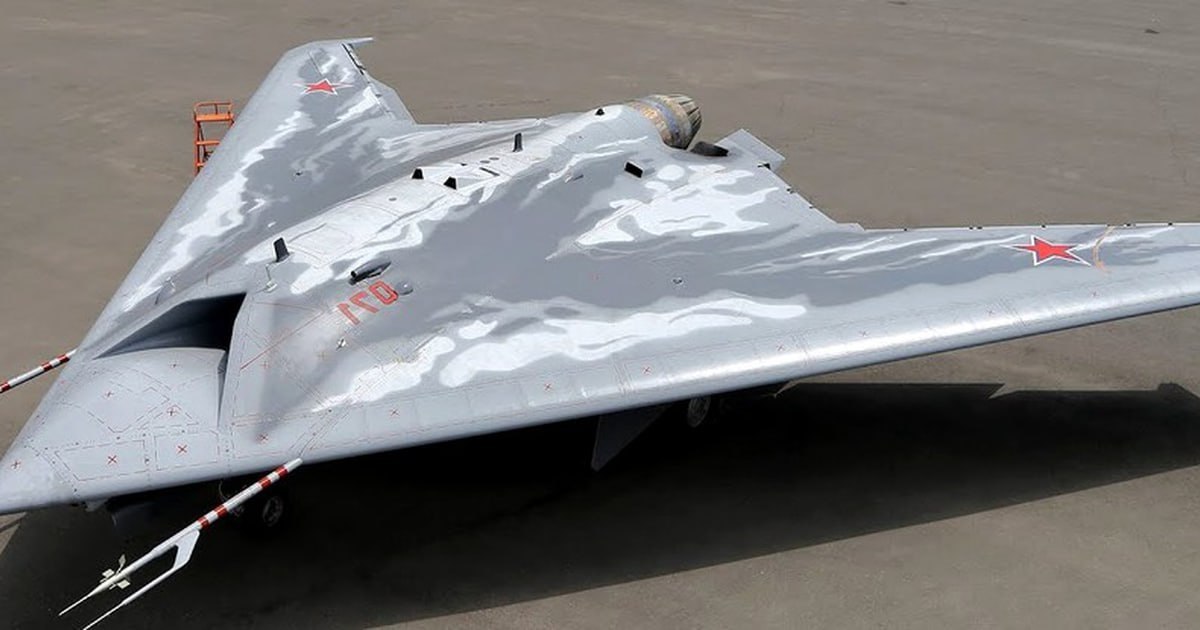
Additionally, employing a drone is significantly more cost-effective compared to utilizing a manned aircraft like the Su-34, primarily due to the drone’s single-engine configuration, which leads to lower maintenance and refueling expenses.
Currently, the Sukhoi Su-34 bombers serve as the air force’s primary glide bombers, with around one hundred of them actively engaged in operations, collectively dropping approximately 3,000 glide bombs each month. However, these Su-34 regiments have faced considerable challenges in the conflict.
Since the escalation of hostilities in February 2022, Ukrainian air defenses have successfully shot down at least 29 of these bombers—representing about one-fifth of all Su-34s that Sukhoi has produced.
Integrating S-70s into the glide-bombing operations could relieve pressure on the Su-34 units and safeguard the lives of valuable aircrew members. Nevertheless, implementing this strategy has proven to be more complicated than anticipated, as recent incidents have illustrated.
Meanwhile, following the downing of the drone, probably by its accompanying Su-57 fighter jet, Russian forces fired an Iskander missile at the crash site to obliterate the S-70 wreckage.
However, before the missile strike, Ukrainian forces had already extracted intact components for examination, which could prove detrimental to Russia.
The analysis could embarrass Russian officials for reasons beyond mere hardware loss. Experts warn that the primary concern lies in the potential for Western engineers to discern the specific wavelengths the S-70 was designed to counteract and the angles from which it remains detectable.
Such insights could significantly undermine the drone’s stealth capabilities. Given the S-70’s relatively large size, slow speed, and high cost, any compromise of its stealth features would render it considerably less effective in combat operations.
- Contact the author at ashishmichel(at)gmail.com
- Follow EurAsian Times on Google News


